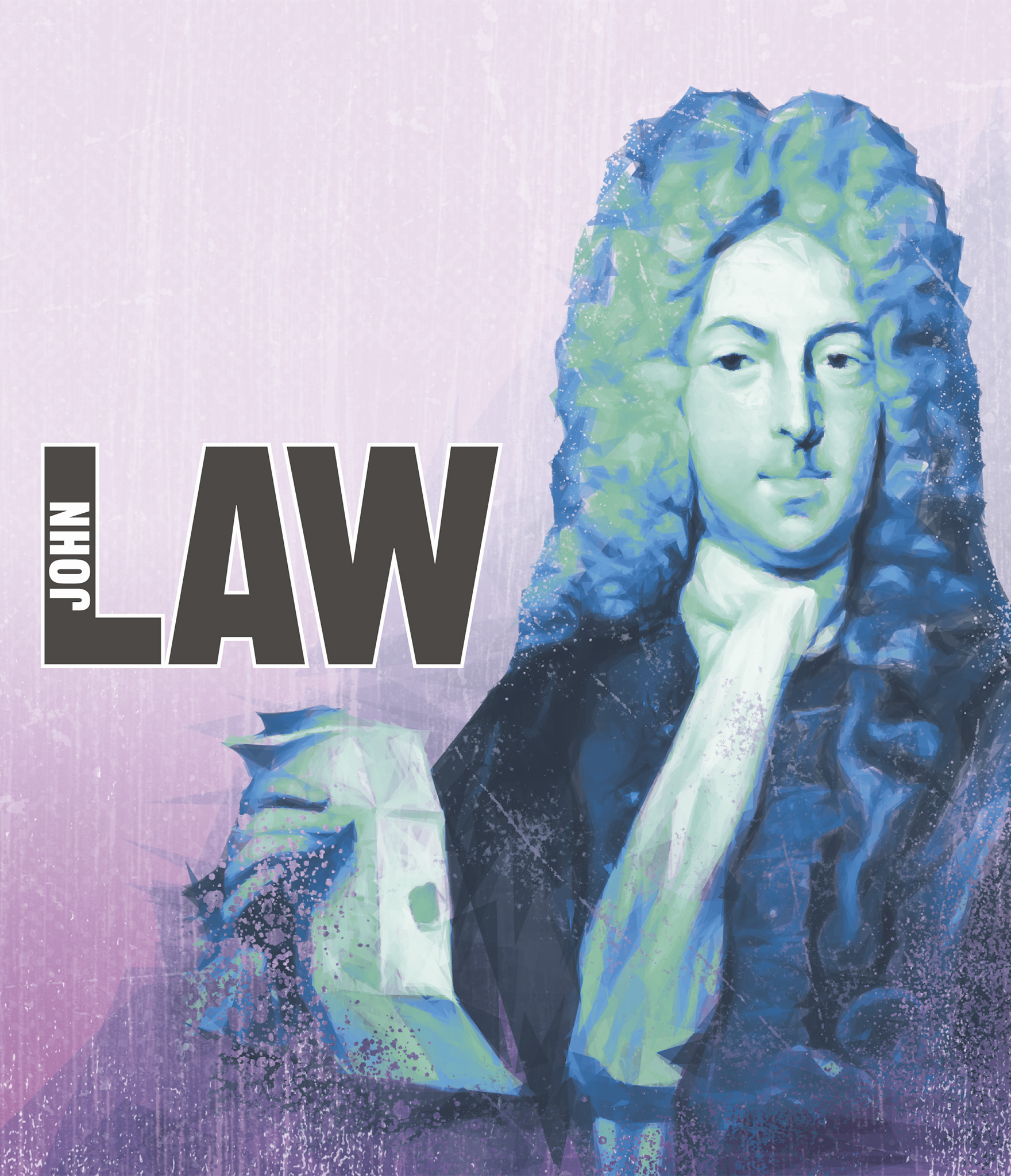
JOHN LAW
1671–1729
An ambitious financial reformer, Scottish economist John Law persuaded the French government to establish a central bank that issued paper money in place of gold and silver. While his scheme ended in chaos, his banking innovations have endured.
John Law spent his early years working for his family, who were bankers and goldsmiths, in Edinburgh. Moving to London, ostensibly to study, he spent much of his time womanizing and gambling. Law’s life changed in 1694, when he killed an opponent in a duel. Sentenced to death, he fled to Amsterdam, where he became increasingly interested in finance. After a decade, Law returned to Edinburgh (where he was safe from rearrest), and in 1705 he published Money and Trade Considered, a book proposing that national banking systems should use paper money backed by land value, not precious metals.
First national bank
Settling in France, Law found its economy stagnant and national debt high. The regent was open to Law’s reforms, so in 1716, Law founded the Banque Générale Privée in Paris, later nationalized as the Banque Royale. The bank was tied to the Mississippi Company, which Law had set up to exploit trade in France’s colonies. Public demand for its shares was frenzied, but the “Mississippi Bubble” burst in 1720, leading to financial panic and the collapse of the Banque Royale. Blamed for the disaster, Law left Paris. He died in poverty in Italy.
MILESTONES
BECOMES A FUGITIVE
After killing an adversary in a duel, flees to Amsterdam in 1694 and begins to study banking operations.
PUBLISHES PROPOSAL
His 1705 book urges reform in banking, including a central bank, paper money, and new credit systems.
ESTABLISHES BANK
Sets up the first French central bank in 1716, which issues millions of livres’ worth of bank notes.
BOOM TO BUST
Central bank collapses in 1720 after issuing millions of shares, devaluing the livre and fueling inflation.

CHARLES-XAVIER THOMAS DE COLMAR
1785–1870
One of the founding figures of the French insurance industry, Charles-Xavier Thomas de Colmar designed and manufactured the world’s first commercially successful mechanical calculator.
Charles-Xavier Thomas (he later added “de Colmar”) conceived the idea of a calculating device while he was Inspector of Supplies for the French Army, a position requiring constant repetitive calculations. After returning to civilian life, in 1819 he cofounded an insurance company—an industry that was entirely dependent on arithmetic. The following year, he patented the arithmometer, a machine that could add, subtract, multiply, and divide. Small-scale manufacture began in 1822 and was stepped up in 1851. Until 1878, it was the only mechanical calculator in commercial production. It improved the efficiency and profitability of de Colmar’s insurance business, and sales to banks, other insurance companies, and government agencies in France and elsewhere made him a wealthy man. De Colmar invested the profits in creating better models of his machine; production continued until 1914, 44 years after his death.
“The machine from Thomas de Colmar…gives results right away, without fumbling.…”
Professor Louis-Benjamin Francoeur, 1822
MILESTONES
GAINS PATENT
Is awarded a five-year patent for the first model of his arithmometer calculating device in 1820.
GAINS RECOGNITION
In 1821, is decorated with the Chevalier of the Legion of Honour for his invention.
BEGINS PRODUCTION
Arithmometers start being made in Paris in 1822; a radically improved model is launched in 1851.
IMPROVES DESIGN
A third model goes into production in 1858 with simplified multiplication and division operations.
